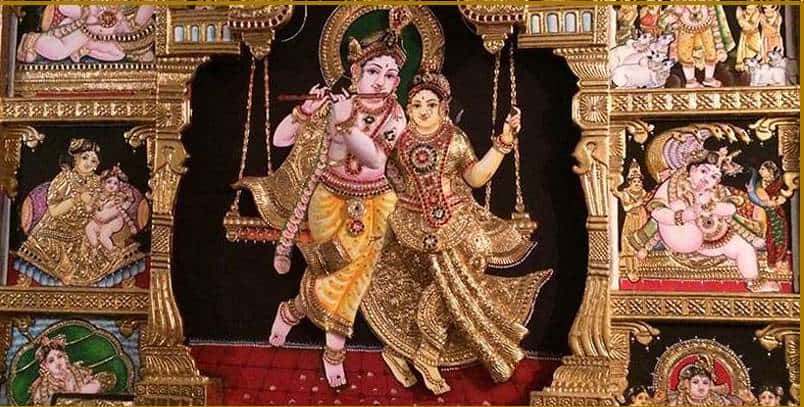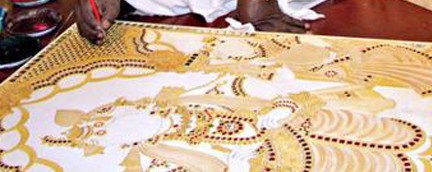Paintings have always been an integral part of Indian culture since ages. Cave paintings of Ellora, Bhimbetka, Sittanavasal, and many others are proof of this. These paintings depict the life of the people of that era, the deities they worshipped, and a lot more things about their lifestyle. Paintings are not just drawings. With the colors, textures, and the materials used in it, they give us a direct insight into the time of the creation of the art. Among the many forms of paintings, one is Tanjore Paintings. Here’s everything that you should know about it:
Thanjavur Paintings History
Also known as Thanjavur paintings, this is the unique art of Tamil Nadu, South India. They are among the most widely known art forms in India and fetch great appreciation from the West. The history of Thanjavur paintings goes many years back. This style of painting developed and attained its peak at the time of the Chola empire and was encouraged by an extended hierarchy of benevolent rulers. Between 1676 and 1855 AD, Tanjore paintings were widely practiced in the Maratha court; in fact, this art form received high patronage from Maratha and Nayak princes. The two communities who mainly practiced this art were Rajus and Naidus. These artists were Telugu speakers and hauled from the Rayalaseema region.
Style And Themes of Tanjore Paintings

A combination of precise skills and mesmerizing art, the theme of these paintings are usually Indian gods and goddesses, saints, and tanjore paintings of Lord Krishna. Incidents from Hindu holy scriptures find a place in the depictions of this art form. Birds, figures, flowers, and animals are also painted. They are known for their vibrant colors, semi-precious stones, mirror pieces, and gold-leaf work. A distinguishing feature of these paintings is that the central subject is often enclosed by curtains, an arch or some other decorated border of that kind. The theme of these paintings are inspired by the Bhakti movement, that was prevalent at that time. All Tanjore works have a 3-D effect- the figurines are embossed and have a surface of real gold. However, as time has passed, instead of real gold, gold milk has come to be used.
Also Read: History of Madhubani Aka Mithila Paintings
How Are Tanjore Paintings Made

- The canvas of Thanjavur paintings is usually made out of wood from the Jackfruit tree.
- A layer of cloth is pasted over it, on which a paste of limestone and binding material is spread.
- After this, a detailed rough sketch of the painting is created by the artist.
- The same mixture is used again to highlight embellishments with a brush, and create a three-dimensional effect.
- Precious and semi-precious stones are used in appropriate places- pillar, studded curtains, clothes, jewellery, etc. in the painting. Colours are also applied as and when required. The colours are usually made out of natural dyes and pigments. However, in today’s time, artificial colours are used to create a better effect.
- To further enhance the impact, gold leaves are applied in the painting.
Tanjore paintings have attracted much attention not only from other parts of India but also the world. The value of these paintings has increased as people have become more aware of their culture and heritage. Today, designs of Tanjore paintings have been adapted on widely loved sarees in South India. The sarees are made of high-quality silk, and these designs are printed on them, rather than being painted. Tanjore paintings are also gifted on various occasions and are used by people to decorate their homes.
Hope the above article gave you detailed insights on the art form.To know about other art forms in India stay connected on https://yehaindia.com/









